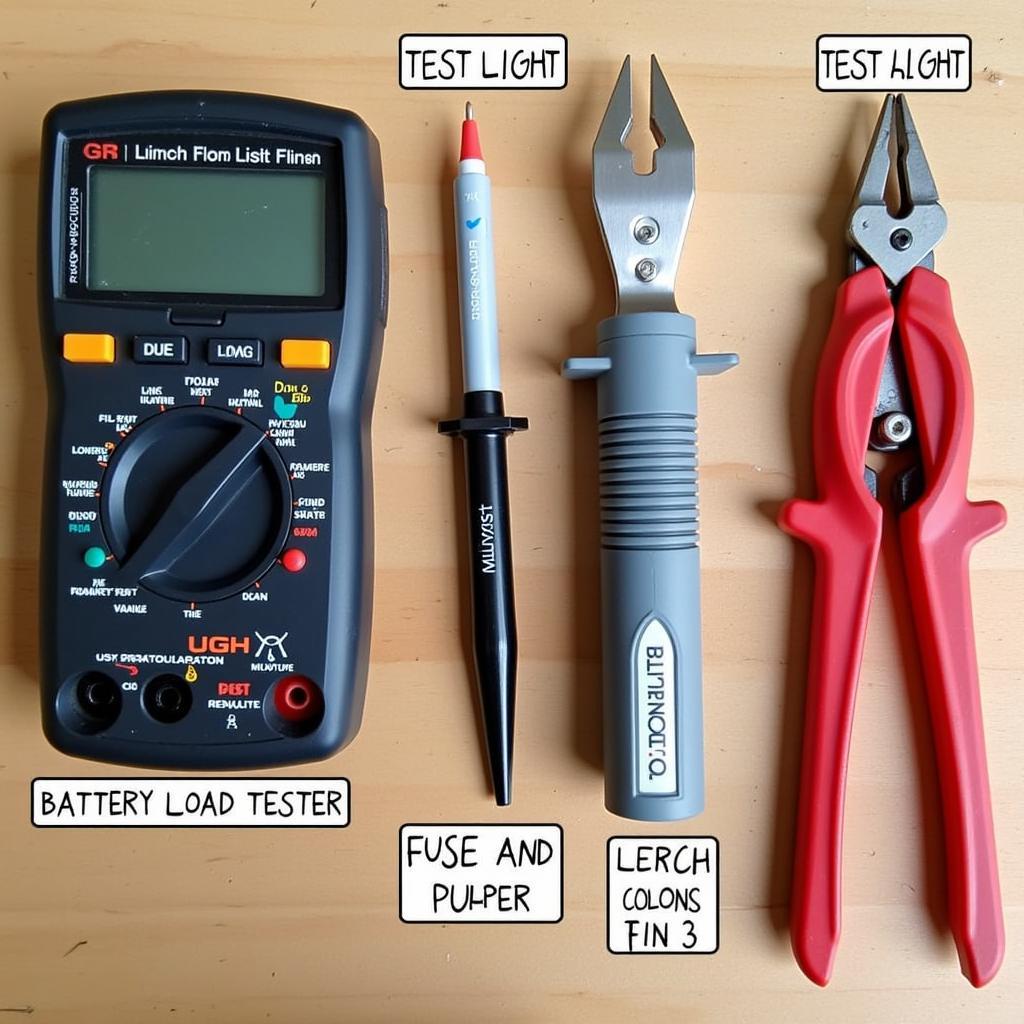Finding car battery drain can be frustrating. This guide offers a systematic approach to diagnosing and resolving this common automotive issue, combining practical advice with advanced diagnostic techniques used by professionals. We’ll cover everything from simple checks to more complex scenarios, empowering you to identify the culprit and get your car back on the road.
Identifying the Symptoms of a Car Battery Drain
Before diving into the diagnostic process, it’s essential to recognize the telltale signs of a car battery drain. These include:
- Difficulty starting the engine, especially after the car has been sitting for a while.
- Dim headlights or interior lights.
- Clicking sound when turning the key.
- Frequent need for jump starts.
- Electrical accessories malfunctioning or operating erratically.
If you experience any of these symptoms, it’s time to investigate further. A draining battery can be caused by a variety of issues, ranging from a faulty alternator to parasitic draw from electrical components.
Pinpointing the Source of the Drain: Tools and Techniques
Finding the source of a car battery drain requires a methodical approach. Here are some tools and techniques that can help:
- Multimeter: This essential tool measures voltage and current, allowing you to pinpoint excessive current draw.
- Test Light: A simpler alternative to a multimeter, a test light can indicate the presence of current flow.
- Battery Load Tester: This tool assesses the overall health and capacity of your battery.
- Fuse Pull Method: Systematically removing fuses while monitoring current draw can isolate the circuit causing the drain.
 Essential Tools for Diagnosing Car Battery Drain
Essential Tools for Diagnosing Car Battery Drain
Using a Multimeter to Detect Parasitic Draw
Using a multimeter is the most accurate method for finding car battery drain. Here’s a step-by-step guide:
- Disconnect the negative battery cable.
- Connect the multimeter in series between the negative battery terminal and the negative battery cable.
- Set the multimeter to measure DC amps.
- Observe the reading. A small current draw (less than 50 milliamps) is normal. A higher reading indicates a parasitic drain.
- Begin systematically removing fuses one at a time, noting the current reading after each fuse removal. When the current draw drops significantly, you’ve identified the circuit causing the drain.
Common Culprits of Battery Drain
Some of the most frequent causes of car battery drain include:
- Interior lights: Make sure all interior lights are turned off, including glove box and trunk lights.
- Faulty alternator: A malfunctioning alternator can prevent the battery from charging properly.
- Bad battery: An old or damaged battery may not hold a charge effectively. If your golf cart batteries are dying fast, you might want to consider checking out this guide: golf cart batteries dying fast.
- Stuck relays: Relays can sometimes become stuck in the “on” position, continuously drawing power.
- Aftermarket accessories: Improperly installed aftermarket accessories, such as stereos or alarms, can cause significant battery drain.
How to Fix a Car Battery Drain?
Once you’ve identified the source of the drain, the next step is to fix the problem. This might involve replacing a faulty component, such as a bad alternator, a stuck relay, or a failing battery. In some cases, you may need to repair a damaged wire or correct a faulty installation of an aftermarket accessory. If you suspect a bad golf cart battery, consider reviewing signs of bad golf cart batteries.
“A systematic approach is key to efficiently diagnosing and resolving car battery drain,” says John Smith, a seasoned automotive electrical engineer. “Start with the basics and progressively move towards more complex diagnostics using appropriate tools.”
Preventing Future Battery Drain Issues
Preventing future battery drain issues involves regular maintenance and careful attention to your car’s electrical system. This includes:
- Regularly checking your battery’s health and charge level.
- Ensuring all lights are turned off when the car is not in use.
- Having your alternator tested periodically.
- Installing aftermarket accessories correctly. If your golf cart lights are draining the battery, you can check this article: golf cart lights draining battery.
- Addressing any electrical issues promptly. If you are having issues with charging dead golf cart batteries you might find this article useful: charging dead golf cart batteries.
“Proactive maintenance is the best defense against car battery drain,” adds Sarah Johnson, a leading automotive diagnostic specialist. “Regular checks and prompt attention to potential issues can save you time, money, and frustration in the long run.” Additionally, understanding how to deal with a battery charger not charging dead battery can be beneficial in preventing further battery issues.
Conclusion
Finding car battery drain can be a straightforward process if approached systematically. By understanding the symptoms, utilizing the right tools and techniques, and addressing the underlying cause, you can keep your car’s electrical system in optimal condition and avoid the inconvenience of a dead battery. Remember, regular maintenance and proactive care are your best allies in preventing future battery drain issues.

